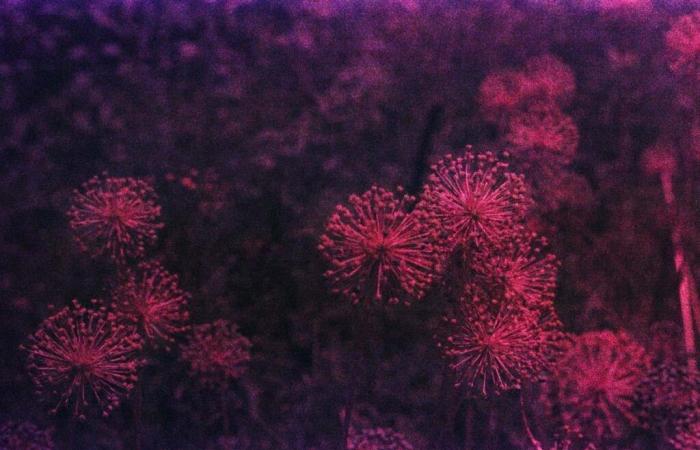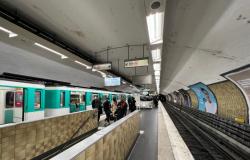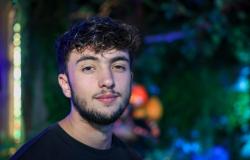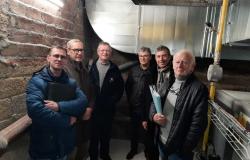Clara Chichin et Sabatina Leccia are both winners of the Transverse 2022 scholarship. Endowed by the ADAGP and Freelens, this scholarship encourages original forms of storytelling through the decompartmentalization of practices, by bringing a photographer into dialogue with an artist from another discipline. The restitution of the project takes the form of a book. That of Clara Chichin and Sabatina Leccia was published by Sun/Sun and is entitled The rustling between the walls. It is also the title of their exhibition at Galerie XII, which is held from November 9 to January 18 and presents a set of works resulting from this fertile collaboration, born in the peach walls of Montreuil.
Tell us about your respective practices?
Clara Chichin : I am a photographer artist. I studied at the Beaux-Arts in Paris and before that, I followed a more theoretical course in art, literature and contemporary thought which gave me a curiosity about multidisciplinarity. In my photographic practice, I am interested in both humans and non-humans. I often present my images in the form of equivalences between people, plants, minerals, still lifes… For several years, my work has focused in particular on the landscape and its representation, nature and the bond that we weave with her.
Sabatina Leccia : For my part, I first studied art history and archeology before turning to textiles with a master’s degree entitled “Textile Futures” at Central Saint Martins (London). The approach to textiles there was very experimental. Already at that time, in 2010, we were thinking about ecological issues, the pollution caused by this industry and how to rethink our way of making textiles. After my graduation, I worked in the fashion industry for three years, as an embroiderer in haute couture workshops. It was then that I branched off into the artistic field, on the border between art and crafts. I became interested in drawing, while keeping my embroidery needle since I perforate the paper. My practice is very slow and immerses me in a meditative state. It allows me to create landscapes or interior maps.
What is the common thread of your project “The Rustle Between the Walls” » ?
We wanted to explore nature in an urban environment. We are both from Montreuil and the peach walls interested us for their historical and heritage dimension. We decided to follow the idea of a regular stroll through these gardens with the desire to work on the abundance in mind. The title “The Rustle Between the Walls” is inspired by a text by Gilles Clément on peach walls and which speaks of interstitial zones between walls. This is what we wanted to explore with this project: what is happening within these gardens, between the walls that punctuate the walks? But also, what happens when two artists with different techniques meet? From the start, we were really into this idea of enthusiasm, collective sharing and an abundance of materials.
How does this dialogue materialize at the level of the work?
Clara Chichin : In our initial meeting, there is the idea of a photograph augmented by the gesture of Sabtatina, a hybridization of mediums. Our two practices really mixed together and we thought about and created the images with four hands. We were lucky enough to be welcomed by Arnaud Levenes, in residence at La Capsule, a photographic residency in Le Bourget, which allowed us to be together to create our works. We had this joint production time where we printed, reworked the images, Sabatina reworked on top of them, but in fact we were all the time next to each other influencing each other, in a sort of conversation and discussion. ‘hybridization.
Saturday Leccia : I worked on the images according to the seasons, because we visited this site over a year. In winter or autumn, the vegetation is less flourishing and there are fewer colors. So I used my needle to puncture the images, scratch them. I worked a lot around paper. We also printed certain images on textiles from which I unweaved certain threads one by one, in a slow gesture with which I created a landscape within the landscape. Then, with the arrival of spring and its chromatic palette, I suggested working on the images using dye plants or flower pigments that we could collect on site. For us it was important that the color came from the plant and that the colored images were in the colors of this garden. There is a relationship to the texture and transformation of images which evolves according to the seasons and what I saw. Interventions also materialize relationships more than human invisible, imperceptible.
Saturday evokes the slowness of his practice. In the text of the’exhibition, you are talking about’a “return to the slow rhythm of life. “. Can you tell us more about the’importance of this long time ?
There was this idea of allowing yourself a certain slowness, particularly through wandering. We wanted to be in another rhythm, a rhythm where we have the right to dream, without immediately worrying about production or productivity. We wanted to let the experience of these walks, of observing the metamorphosis of the landscape, infuse in us . This slowness was also found in the harvesting of the plants with which we worked as well as in the making of the image. We sometimes let the images “rest” before resuming them to give them a new materiality. When working with plants, we were in this rhythm, following the cycle of nature, it was with the arrival of spring, flowering, that color emerged in our images. dan It created a kind of living tension. What was fascinating about this project was this connection to another rhythm, a direct relationship with natural elements.
There is perhaps a political dimension in your work through the ecological question, but which comes through a rather poetic expression.
We are in fact more in the spirit of raising awareness of a new way of being in relationship with living things. For us, this really involves wandering around, observing transformations, particularly those of plants, and creating a work as a poetic space, conducive to daydreaming. We draw inspiration in particular from the thoughts of the philosopher Baptiste Morizot and Estelle Zhong Mengal, according to whom the ecological crisis is a crisis of sensitivity. We’re trying to bring back that sensitivity. There is also the influence of Gilles Clément who speaks of the garden as a place where it is still possible to risk the dream, as a place of resistance. What was also important for us is that the Fédération des Murs à Pêches (https://mursapeches.blog/qui-sommes-nous/documents/), which brings together different associations, is engaged in a process of preserving this Montreuillois space. . This place conducive to daydreaming resists the commercial world, industrialization and urbanization. The idea was therefore not to denounce something, but rather to weave together something sensitive between humans and the living.
How has your collaboration changed your respective practices?
Clara Chichin : As a photographer, I had to learn to detach myself from images. It was a little difficult at first to accept that someone else could appropriate my images and transform them, give them another form of life. But what was even more exciting was that it took us in directions where I probably wouldn’t have gone alone, especially with the whole thing about working with plant pigments. It was something I was interested in, but hadn’t dared to do before. This collaboration therefore allowed me to step out of my comfort zone. Without Sabatina, I would never have gotten this far in this exploration.
Saturday Leccia : I wanted to integrate photography into my own work for a long time but I didn’t dare. Suddenly, being next to Clara who was taking the photos, it became more natural and integrated into my daily life. This collaboration allowed me to incorporate this medium into my artistic practice. This was not only enriching for the project, but also for our respective practices. This is when we realize how much it has nourished us each other.
More information
Clara Chichin and Sabatina Leccia – The rustling between the walls
From November 9, 2024 to January 18, 2025
Gallery XII
14 Rue des Jardins Saint-Paul
75004 Paris
www.galerie-photo12.com






